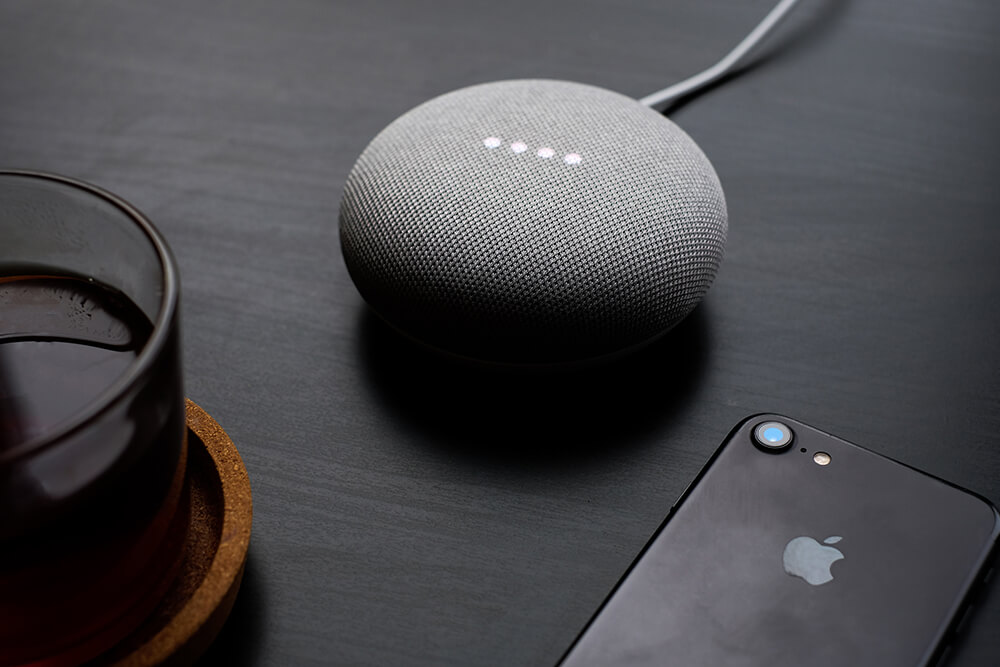Only 4 Percent of Businesses Are Voice Search Ready—Are You in That Number?
April 29th, 2019 by
At the beginning of 2019, over 66 million people in the United States were uttering the phrases “Ok Google,” “Hey Siri,” or “Alexa!” to find information on the internet. When you consider that the adult population of the United States is around 253 million, that means that around 25 percent of people are using voice search to get answers to their questions. As marketers, we need to start to pay attention to this, and make sure that we are present to help them answer their questions. According to a recent study conducted by Uberall, only 4 percent of businesses are “voice search ready,” which means that there is opportunity to show up in searches for businesses that are prepared.
25 Percent Is Not That Significant, So Why Should I Care?
In 2016, the number of smart speaker users in the United States was estimated to be 16 million. So, between 2016 and 2018, the segment grew by four times. But in order to really understand the impact, we need to understand usage. Thanks to a recent study conducted by Bright Local, we know that 58 percent of consumers have used voice search to find local business information in the last 12 months and that 46 percent of voice search users seek out local business information on a daily basis. This behavior has big implications for local brick and mortar businesses. So, although 25 percent may not seem like a huge number, the growth in adoption and usage make voice search a channel worthy of the attention of local businesses.
Ok, So, It’s Here, How Do I Take Advantage?
The good news is that right now, voice search optimization looks a lot like regular SEO. If you are answering questions and providing valuable information to the searcher, you will be fine. If you are a local business, there is a silver bullet that many of your competitors are not using. Remember, 46 percent of voice search users are using their device to search for information about local businesses on a daily basis. If you couple that with Uberall’s finding that less than 4 percent of businesses have the six key elements of voice search readiness complete and consistent across the important platforms, you can see that with a little work, your business could show up in intent-based voice searches like those that end in “near me” and “near me now,” which are on the rise, according to Google.
What Does It Mean to Be “Voice Search Ready”?
Voice search readiness has a lot of parallels with local search optimization, especially for local businesses. To put it another way, if you have done the right things to optimize for local searches, your local business should perform well in voice search, especially for bottom-of-the-funnel (more likely to lead to conversion and store visits) searches. Uberall’s study identifies 37 directories that feed directly into voice search platforms. The good news is that not all of them may be relevant to your audience. Uberall found that 90 percent of the impact on Voice Readiness Score comes from the directories that we are all familiar with: Google, Yelp, and Bing. I would add Apple Maps, as well. Uberall states that Siri’s search is powered by Google, but I was not able to replicate that on my iPhone, and according to a recent article by Eric Shanfelt, Siri gets its business data from Apple Maps Connect and reviews any other information from Yelp, or sometimes other sources.
What to optimize is pretty simple. Think about what users need to know about your business when they search:
- Address: Potential customers need to know where they can find you, and Siri, Alexa, and Google Assistant need to know what local searches to serve your business up for.
- Opening hours: How frustrating is it to show up to a place whose map listing asserts that it is open, only to find that it’s closed. BONUS: Remember to update any special hours that you have around holidays or any other periods where your normal business hours do not apply.
- Phone number: This is an easy conversion point.
- Business Name
- Website URL
- Zip Code
This may seem pretty basic, but these attributes need to be consistent across all directories that you have out there to get the maximum benefit.
Putting It Into Action
If you are a local business and want to put this into action, there are three approaches that you can employ:
- Do it yourself: If you have the time, you can go to the four major platforms directly, claim your business (we have created step-by step-directions for claiming your Google My Business Profile), and input the information listed above. If you choose this option, you will want to review these periodically, as sometimes listings get changed with community edits, and you will also want to update the platforms when anything changes with your business—think holiday hours.
- Use a listing distributor like Vendasta or Yext: There are other aggregators out there as well, but the idea is this—put your information into one platform, and let them handle getting it to the directories in a consistent manner. This approach can allow you to go beyond the four major platforms, but still requires some manual effort on your part. Regular monitoring is still suggested, although this can be done in the aggregator, and not all directories have “two-way feeds,” which could mean that you will need to log into the directory platform to make the updates.
- Hire a digital marketing agency to manage your online presence: If your time is better spent on other areas of your business, or the prospect of managing listings overwhelms you, hiring an agency can be a great option. When selecting an agency, ask if they are using a listings distributor, which will help them keep your listings accurate, and can provide you with a dashboard to monitor their progress. The main benefits here are that the agency should be familiar with the listing’s distributors and directories, and they will know who to contact when there are any problems with consistency.
Voice search and its intersection with local search is still in its infancy and is constantly evolving. With the increased adoption of both the devices and behaviors, this tactic is ripe for exploitation by savvy local businesses. If you’d like help building a dynamic marketing strategy that encompasses these trends, reach out to Search Influence to request your free marketing analysis.


